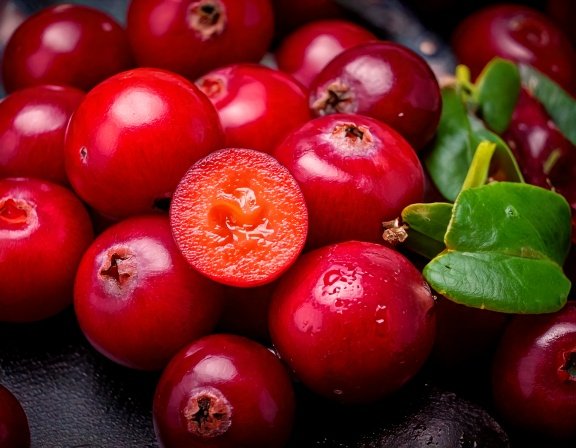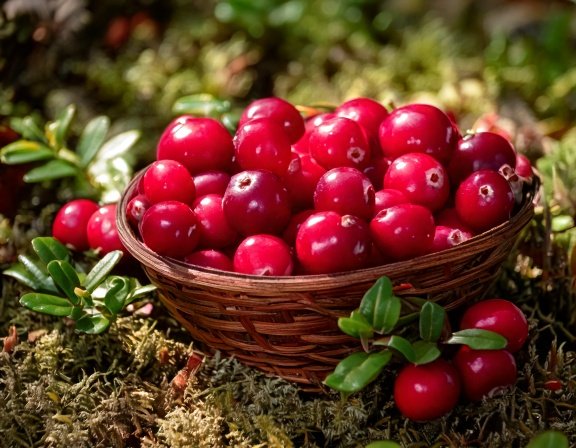Cranberry Benefits: How to Grow, Harvest and Use for Urinary and Kidney Health

Kidney Reboot Your 7-Day Detox & Repair Blueprint (Recipes + Daily Routine)
Download our essential PDF guide.
Download Free Guide
Cranberries are more than a festive fruit—they’re a true garden superfood with a remarkable track record for urinary tract and kidney health. From their unique cultivation needs to their rich blend of antioxidants, cranberries offer year-round benefits for your body’s cleansing and protective systems. In this post, discover how to grow and harvest cranberries at home, and explore their best uses for supporting urinary wellness and kidney vitality.


How to Grow Cranberries for Year-Round Wellness
Cranberries (Vaccinium macrocarpon) are vibrant, nutrient-packed berries that thrive in cool climates and acidic soil. Famous for supporting urinary tract health, immunity, and antioxidant balance, cranberries can also be a rewarding perennial crop for home gardeners. With the right soil conditions and moisture, you can grow these resilient plants for fresh, tart berries year after year.
Soil Requirements
Cranberries thrive in acidic soil with a pH between 4.0 and 5.5. They prefer well-drained, sandy or peaty soil—conditions that mimic their native bog environments. If your soil is neutral or alkaline, amend it with peat moss, pine needles, or elemental sulfur to increase acidity. Good drainage is essential to prevent root rot while maintaining steady moisture.
Light
Plant cranberries in a location with full sun exposure for optimal berry production. They tolerate partial shade, but fruit yield and sweetness improve dramatically with at least six hours of direct sunlight per day.
Watering
Cranberries love moisture—keep the soil consistently damp without waterlogging it. Mimic their natural bog habitat by watering regularly, especially during hot or dry spells. A drip irrigation system or shallow basin setup works well to maintain even hydration. Avoid letting the soil dry out completely, as this can reduce flowering and berry set.
Planting
Plant young cranberry plants or runners in spring, once the soil has warmed slightly. Space them about 1–2 feet apart in all directions to allow for spreading. Cranberries form low, creeping vines that fill in over time, creating a lush, berry-bearing mat. Lightly press the roots into the soil rather than burying them too deep—shallow planting encourages vigorous growth.
Mulching
Top the bed with a thick layer of pine needles, bark, or peat moss mulch to help retain soil acidity and moisture. Mulching also protects the shallow roots from temperature swings and keeps weeds down. Refresh your mulch annually in spring or fall for best results.
Garden Tip: Once established, cranberries are low-maintenance perennials. Prune runners each spring to encourage upright fruiting stems, and enjoy a harvest of antioxidant-rich berries perfect for teas, sauces, or winter wellness blends.
Growing Tip: Cranberry plants can produce fruit for decades – establish a patch for long-term harvests and health!
Renew: Ashwagandha, L-Theanine & Herbal Sleep Support
- Includes Ashwagandha, L-theanine, Magnesium, Melatonin, Herbal Extracts
- Supports relaxation, hormonal balance, and fat burning at night
- No habit-forming stimulants—just gentle plant and mineral support


How and When to Harvest Cranberries
Cranberries are ready for harvest when their color, texture, and firmness signal full ripeness. These jewel-toned berries develop their rich red hue and tangy flavor late in the growing season, making them a rewarding fall crop for wellness gardens. Knowing when and how to harvest ensures you capture their peak flavor and antioxidant power for use all year long.
When to Harvest
Harvest cranberries in late fall, typically from September through November, depending on your region. Ripe berries turn a deep, glossy red and feel firm to the touch. Lightly press a berry between your fingers—if it’s bouncy and crisp rather than soft, it’s ready to pick. Waiting until full color develops ensures the highest levels of beneficial plant compounds like proanthocyanidins and vitamin C.
How to Harvest
To harvest, gently twist or clip each berry from the vine by hand. If you have a large patch, you can also shake the vines over a clean sheet or shallow tray to collect the berries as they fall. Handle cranberries carefully to avoid bruising, which shortens their shelf life. Rinse them briefly under cool water after picking to remove any debris.
Storing and Preserving
Cranberries are one of the few fruits that store exceptionally well, making them perfect for year-round wellness and kitchen use. Their natural acidity and sturdy skins allow them to keep fresh for weeks or to be easily preserved through freezing, drying, or canning. With just a little preparation, you can enjoy their tart, antioxidant-rich flavor long after harvest season—whether in teas, sauces, smoothies, or herbal tonics.
- Fresh use: Keep rinsed cranberries in the refrigerator for 2–4 weeks in a breathable container.
- Freezing: Spread berries in a single layer on a tray, freeze until solid, then transfer to airtight bags or jars. Frozen cranberries maintain flavor and nutrients for up to a year.
- Drying: Dehydrate berries at a low temperature until chewy for snacks or teas.
- Preserving: Turn fresh cranberries into homemade juice, sauces, or syrups for immune and urinary tract support year-round.
Storage Tip: Frozen cranberries are perfect for blending into smoothies, herbal tonics, and baked goods—keeping their bright flavor and health benefits long after harvest season ends.
Active Compound:
Active Compound: Cranberries
Proanthocyanidins: Potent antioxidant compounds that prevent harmful bacteria from adhering to the walls of the urinary tract. These plant polyphenols also help reduce inflammation, support urinary comfort, and protect tissues from oxidative stress.
Aqua Burn: Plant & Mineral-Powered Energy
- Infused with herbal extracts, minerals, and natural metabolism activators
- Supports gentle hydration and calorie burning—no harsh chemicals
- Designed for safe daily support of energy and fat loss
Cranberries for Urinary and Kidney Wellness
Cranberries are one of the best-known herbs for supporting urinary tract and kidney health. Their potent red pigments, known as proanthocyanidins (PACs), have a unique ability to help prevent bacteria—especially E. coli—from adhering to the walls of the urinary tract. This makes cranberries a powerful ally for reducing the frequency of urinary tract infections (UTIs) and promoting overall kidney wellness.
Why Cranberries Work
The key active compounds in cranberries, type-A proanthocyanidins, create a slippery environment in the urinary tract that helps the body naturally flush out bacteria before infection takes hold. In addition, cranberries provide vitamin C, antioxidants, and organic acids that support immune function, balance urinary pH, and protect delicate kidney tissues from oxidative stress.
For Kidney Support
Cranberries also gently assist kidney function by supporting filtration and detoxification. Their antioxidants reduce inflammation in the urinary system and help prevent calcium oxalate buildup—one of the main causes of kidney stones. Combined with adequate hydration and mineral-rich herbs like nettle or dandelion leaf, cranberries form part of an effective kidney-nourishing routine.
Safety and Tips
- Choose unsweetened, pure cranberry products for therapeutic use.
- Those prone to kidney stones or taking blood thinners should consult a healthcare provider before high-dose or long-term use.
- Balance tart cranberry preparations with warming herbs like cinnamon or ginger to support digestion.
Quick Tip: Combine cranberries with nettle or parsley tea for a gentle daily kidney tonic that supports urinary comfort and overall detox balance.
Java Burn: Natural Green Tea & Coffee Booster
- Infused with green tea extract, L-theanine, and plant nutrients
- Vegan-friendly, non-GMO formula—no synthetic additives
- Works with your body’s own energy and fat-burning systems
How to Use Cranberries
Cranberries can be enjoyed in many forms—fresh, dried, juiced, or as supplements—to support urinary tract, kidney, and overall immune wellness. Whether you prefer a daily tonic or an occasional herbal boost, these antioxidant-rich berries offer an easy and effective way to maintain balance and vitality.
Cranberry Juice
Drink 1–2 cups of unsweetened cranberry juice daily to help prevent bacteria from adhering to the urinary tract and to promote kidney filtration. For added flavor and balance, mix with water or a splash of lemon juice. Avoid sugar-laden commercial blends, as excess sugar can counteract cranberry’s natural cleansing benefits.
Dried Cranberries
Snack on unsweetened or lightly sweetened dried cranberries, or add them to salads, oatmeal, or trail mixes for a tart, nutritious boost. Dried cranberries are rich in fiber, antioxidants, and plant compounds that support digestion and circulation while adding flavor and color to meals.
Supplements
Cranberry capsules or powders provide a convenient, concentrated source of proanthocyanidins (PACs)—the compounds responsible for cranberry’s urinary and kidney support. Choose high-quality supplements standardized to contain 36 mg PACs per dose for best results. Perfect for travel or daily use without added sugar.
Home Remedies
For a gentle, soothing kidney tonic, simmer fresh or frozen cranberries with water and a little honey until softened. Strain and sip warm as a calming tea or use the liquid as a base for wellness drinks and smoothies. This traditional preparation supports hydration, detoxification, and urinary comfort naturally.
How to Use Cranberries
- Fresh or Frozen Berries: Eat a small handful (½–1 cup daily), or add to smoothies, porridge, and salads for steady urinary and kidney support.
- Cranberry Tea: Simmer ½ cup fresh or dried cranberries in 2 cups water for 15–20 minutes. Strain and sip warm; sweeten lightly with honey or add lemon for brightness.
- Cranberry Juice (Unsweetened): Drink ½–1 cup daily to help prevent bacteria from adhering to the urinary tract. Choose pure, unsweetened juice—avoid sugary blends that can counteract its detoxifying benefits.
- Cranberry Extract or Capsules: For concentrated support, choose a standardized extract containing 36 mg PACs per serving, or follow guidance from your herbalist or healthcare provider.
Quick Tip: Combine cranberry with complementary herbs like nettle, parsley, or dandelion leaf to enhance its cleansing, mineralizing, and restorative effects for the urinary and kidney systems.
This herbal recipe is shared for educational purposes only, based on traditional use and available sources. It is not medical advice. Please consult your healthcare provider before use, especially if pregnant, nursing, or on medication.